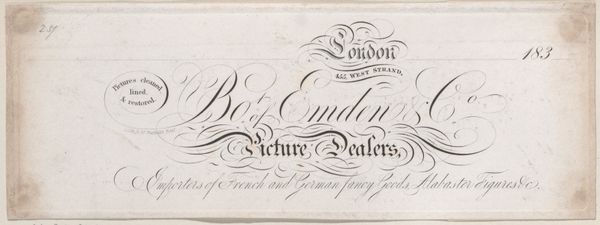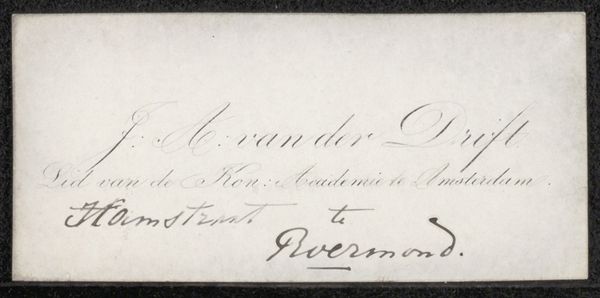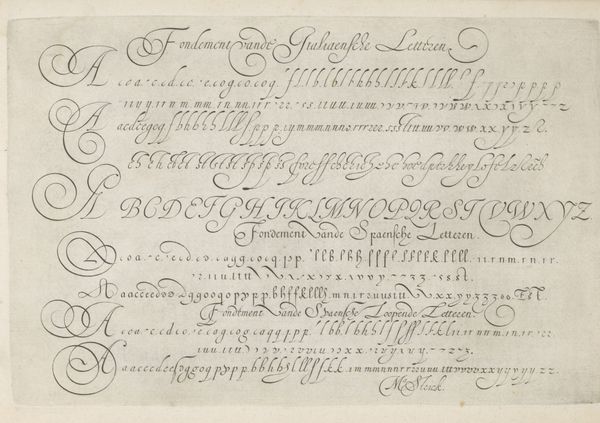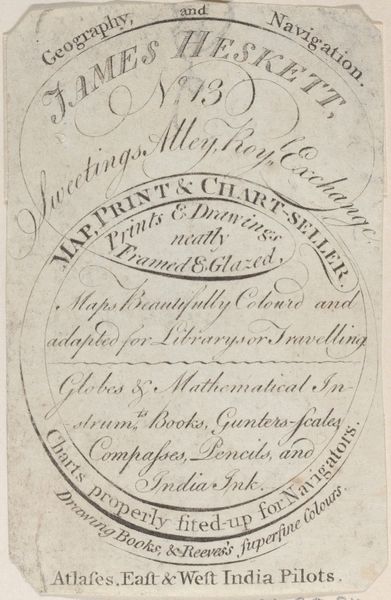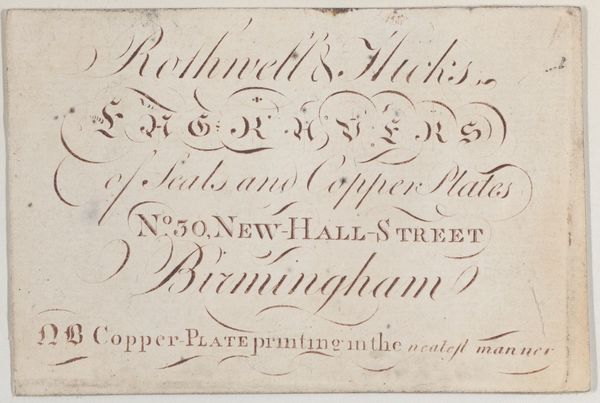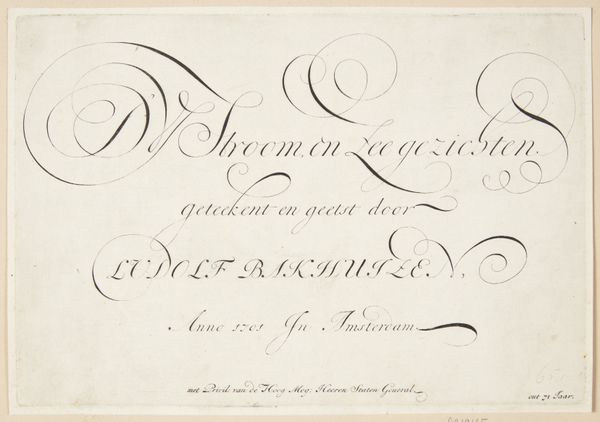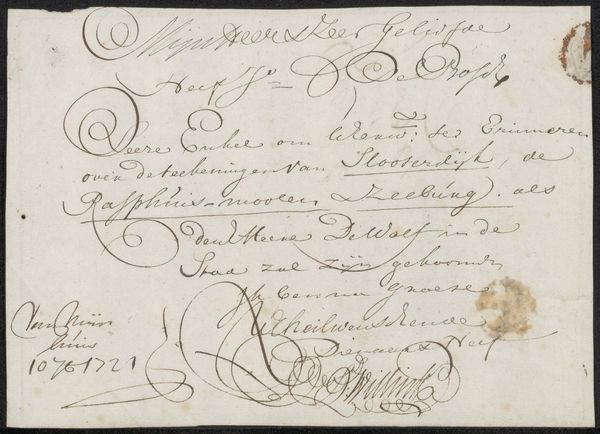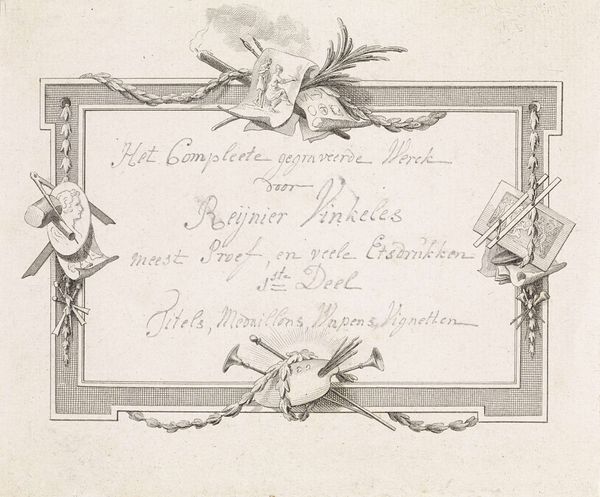
Trade Card for Jones and Barriff, Engravers and Printers 1800 - 1900
0:00
0:00
drawing, graphic-art, print, typography, poster, engraving
#
drawing
#
graphic-art
# print
#
typography
#
poster
#
engraving
Dimensions: Sheet: 1 15/16 in. × 3 in. (5 × 7.6 cm)
Copyright: Public Domain
Editor: Here we have "Trade Card for Jones and Barriff, Engravers and Printers," likely created between 1800 and 1900. It's an engraved print on paper, currently residing at the Met. I'm struck by how decorative and almost theatrical it is for something that’s essentially an advertisement. How should we interpret something so seemingly simple? Curator: It is fascinating how much visual information is packed into such a small piece. Trade cards like this weren't just advertisements; they were statements of identity and markers of social standing. Consider the context: print was increasingly accessible, but the ability to commission beautifully engraved typography still signalled a certain level of prosperity. What does the intricate script and detail suggest about the target audience? Editor: I guess they wanted to appear skilled and sophisticated, hoping to attract a clientele who valued the same qualities. Were these cards widely circulated, or more exclusive? Curator: That's a key question. These trade cards existed within a rapidly changing print culture. On one hand, businesses needed to compete for attention. On the other, too much accessibility could cheapen the brand. I would argue that the elegance and relative cost of producing engravings kept them aimed toward a specific segment of society, seeking fine craftsmanship and artistry. How do you see it functioning in contrast to, say, a mass-produced handbill of the same era? Editor: Right. The handbill would be about pure information dispersal; Jones and Barriff are selling an image, a feeling of quality and trustworthiness alongside their services. Thanks, I now see how much cultural weight is held within its small surface! Curator: Indeed. The trade card is a compelling example of how even everyday objects can reveal insights into the social and economic values of a specific period and location. Examining it closely teaches us about the complex relationship between commerce, artistic expression, and social status in 19th-century London.
Comments
No comments
Be the first to comment and join the conversation on the ultimate creative platform.
